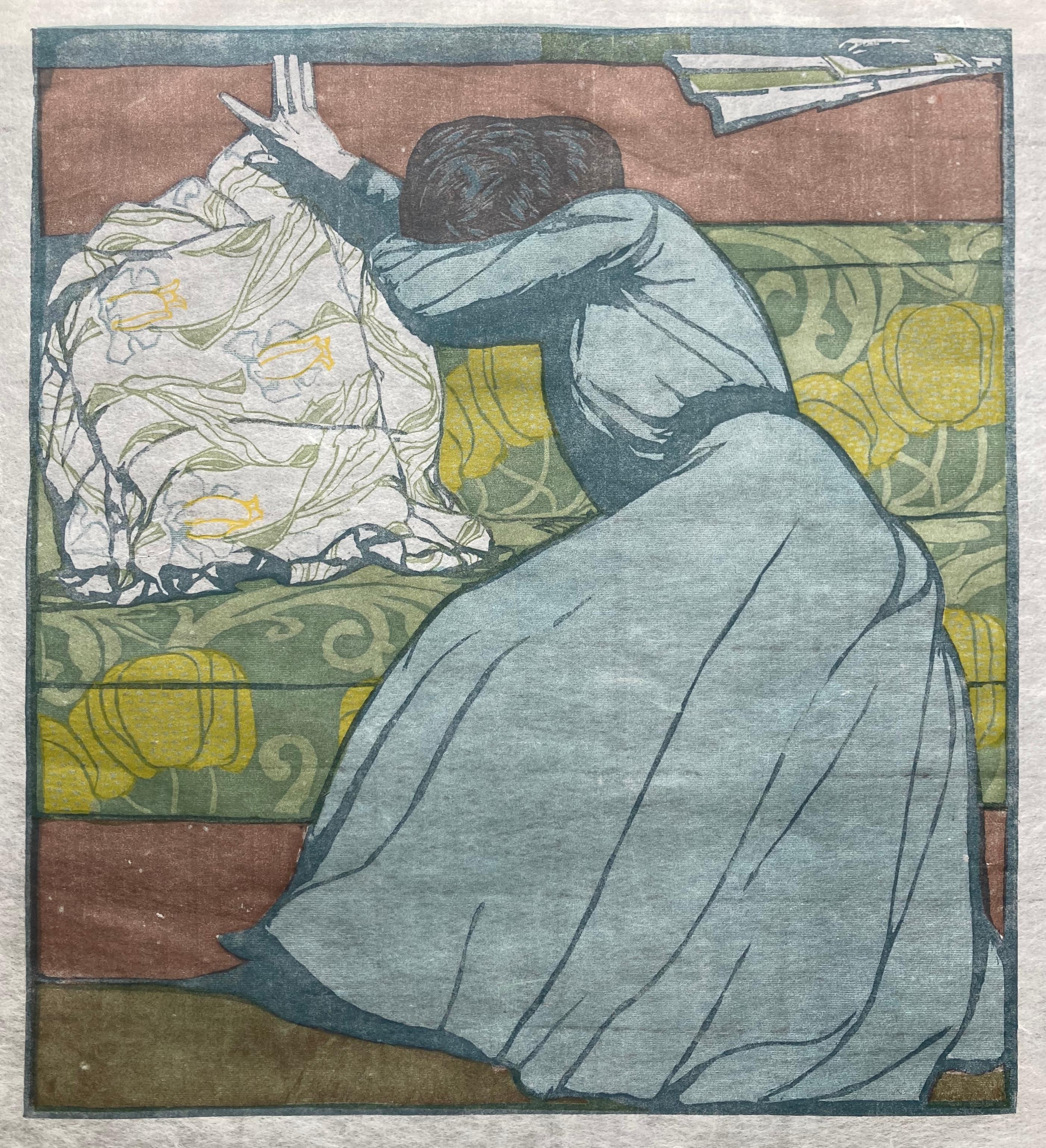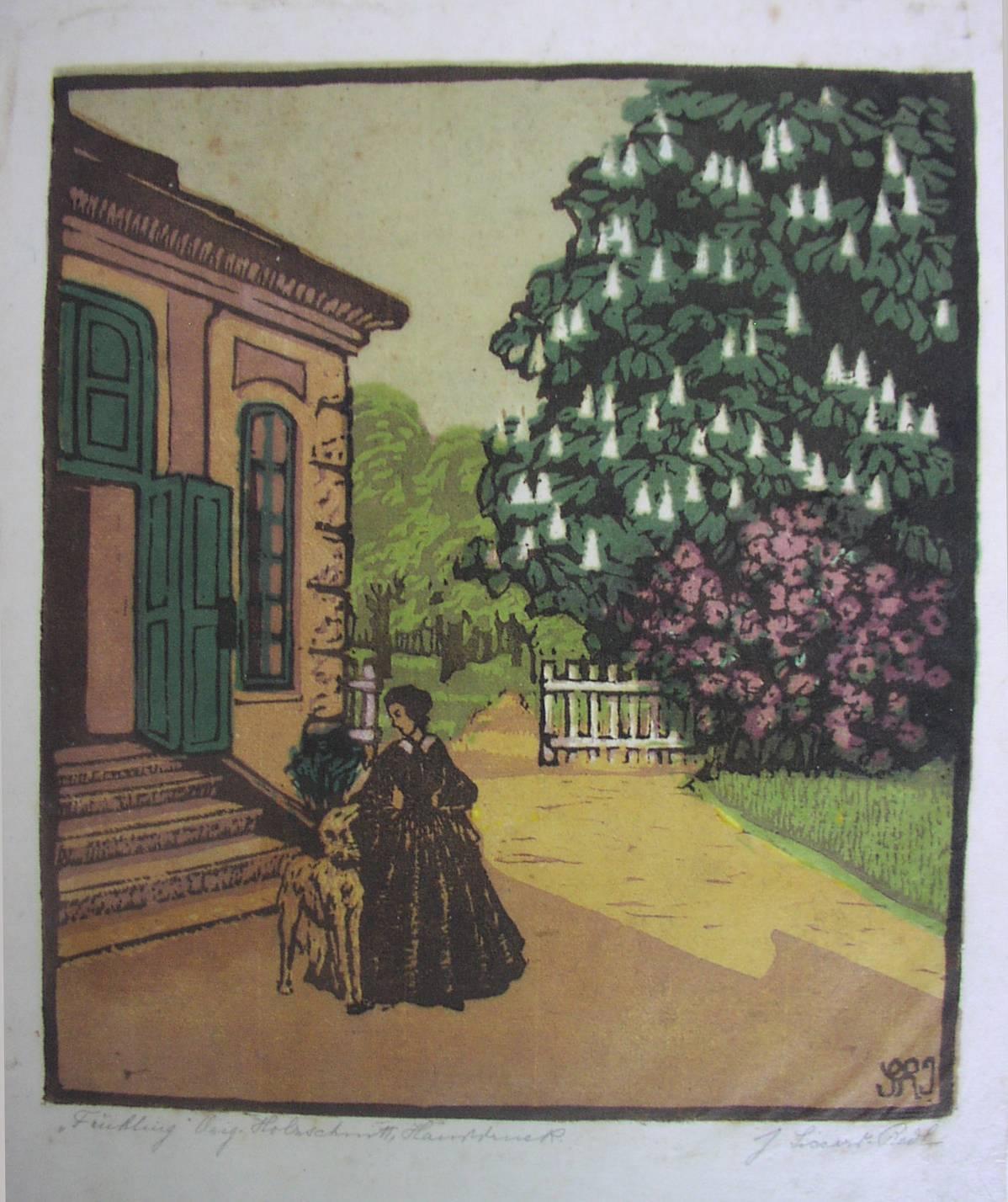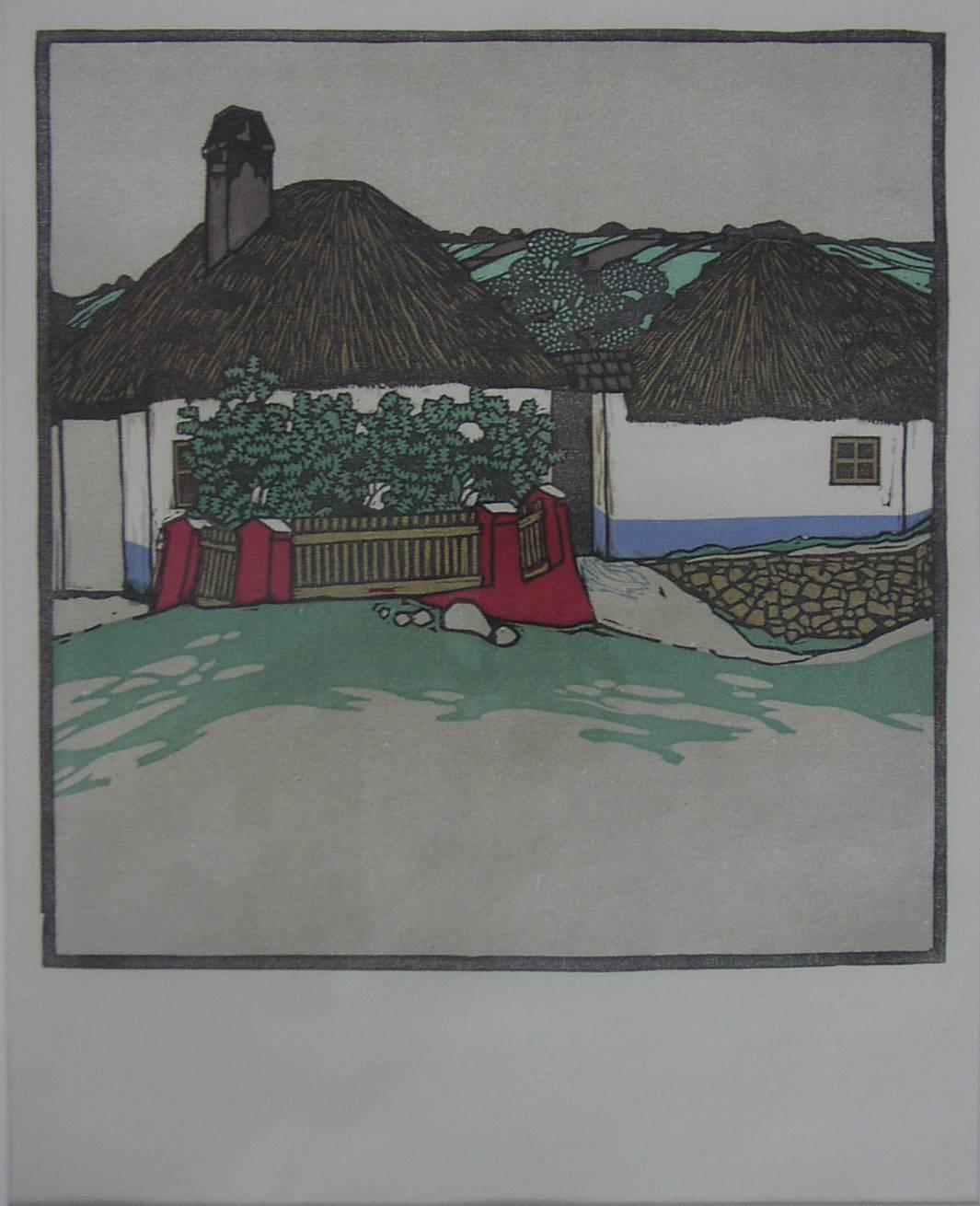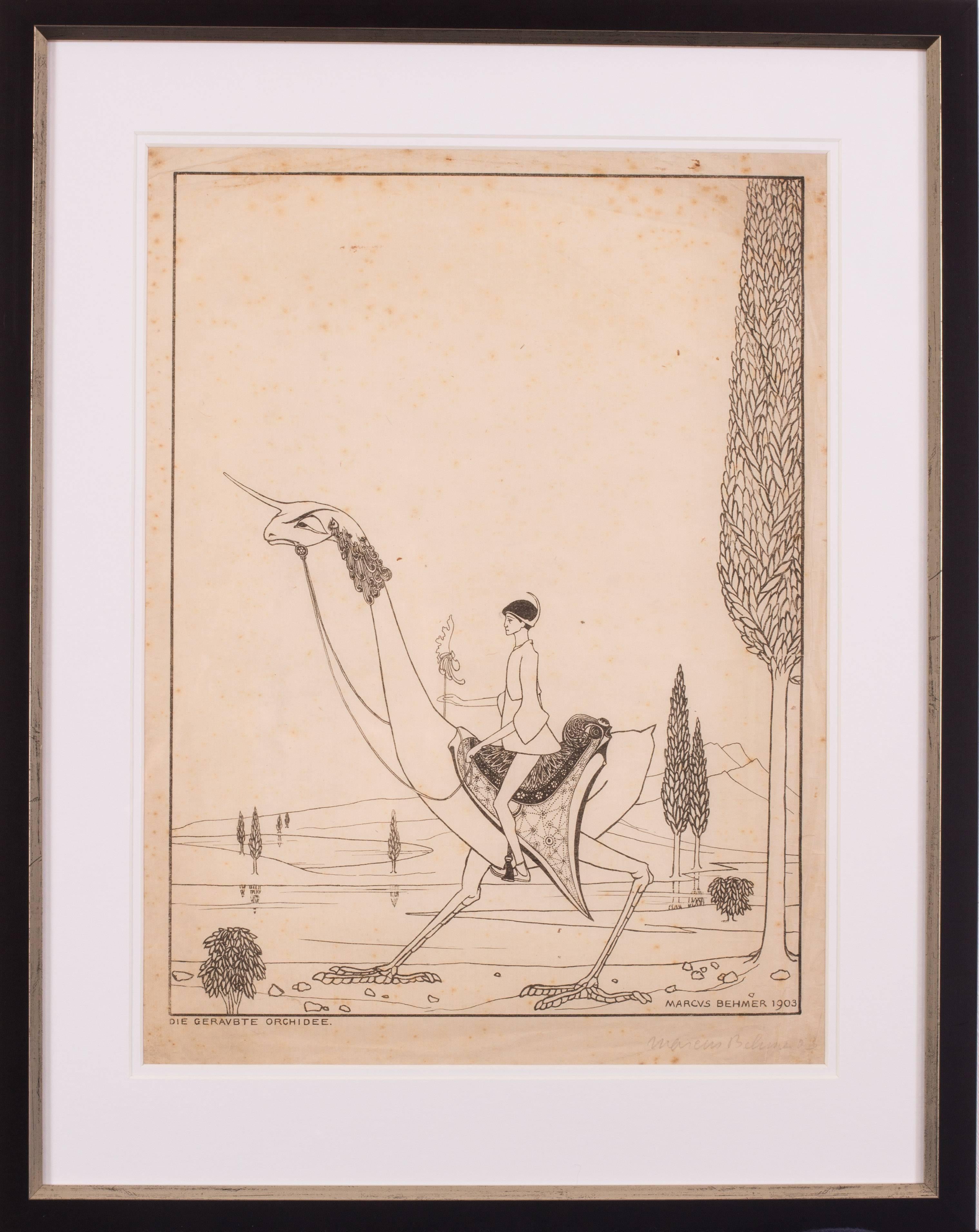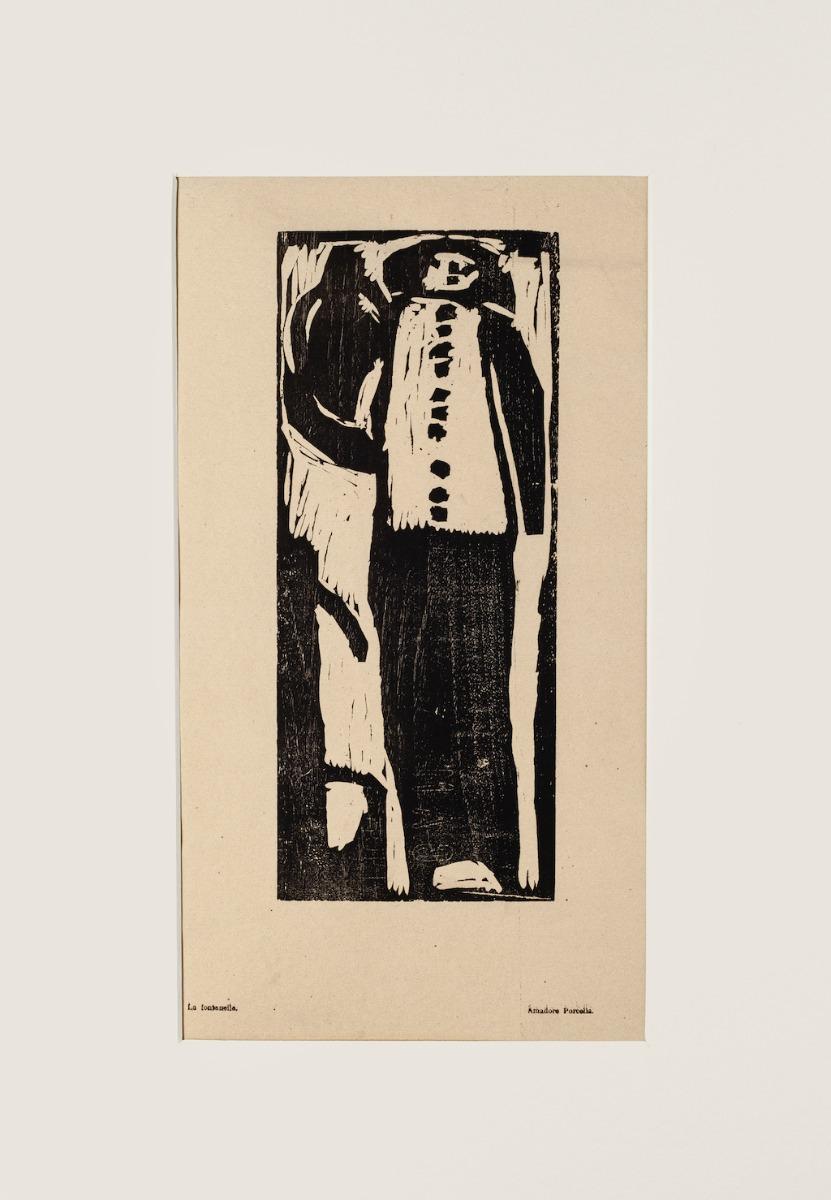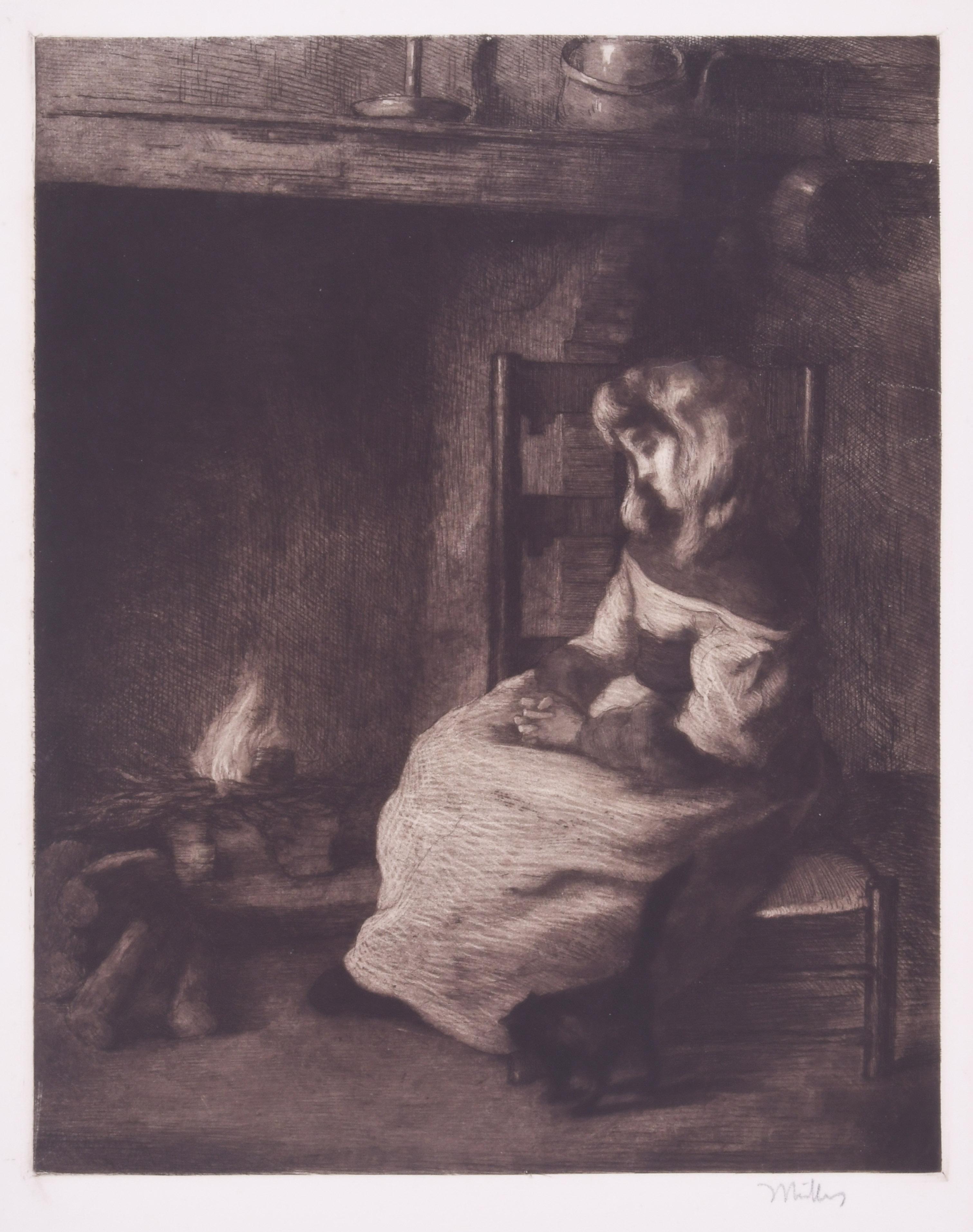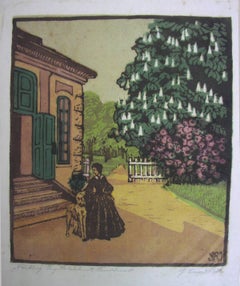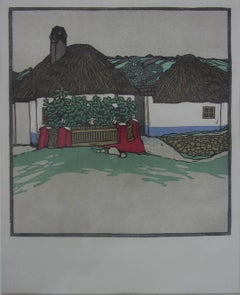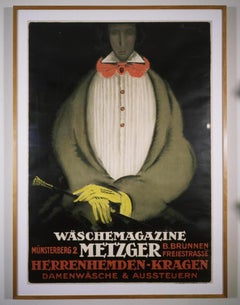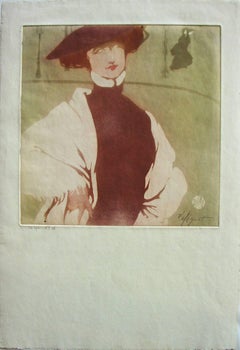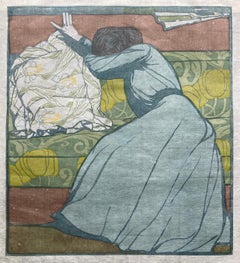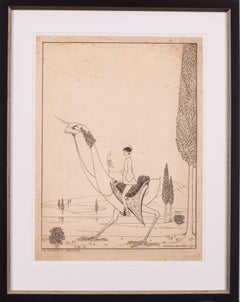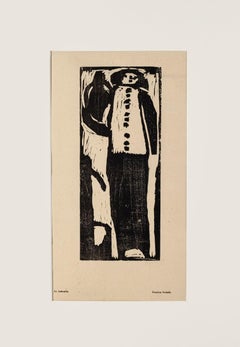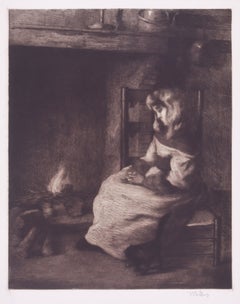Items Similar to Der Polster
Want more images or videos?
Request additional images or videos from the seller
1 of 5
Max KurzweilDer Polster1903
1903
$3,500
£2,620.99
€3,022.27
CA$4,919.41
A$5,374.44
CHF 2,819.41
MX$65,386.66
NOK 35,074.72
SEK 33,209.84
DKK 22,561.79
About the Item
Kurzweil, Maximilian. Der Polster, 1903. Color woodcut on japon. Included as an insert in Pan. Unsigned. Framed.11 1/4 x 10 1/4. 1
Ref: Hofstatter, p. 241; Pabst, p. 154.
Maximillian Kurzweil was the co-founder of the Vienna Secession in 1897 and editor and illustrator of the influential Secessionist magazine Ver Sacrum (Sacred Spring). Kurzweil was also professor at the Frauenkunstschule and in 1905, he was awarded the Villa Romana prize. His later works show influence from Edvard Munch and Ferdinand Hodler. , Kurzweil belongs to the most significant representatives of the Viennese Secessionist movement after Gustav Klimt and Egon Schiele.
- Creator:Max Kurzweil (1867-1916, Austrian)
- Creation Year:1903
- Dimensions:Height: 11.025 in (28.01 cm)Width: 10.025 in (25.47 cm)
- Medium:
- Movement & Style:
- Period:
- Condition:
- Gallery Location:New York, NY
- Reference Number:1stDibs: LU29221719823
About the Seller
5.0
Gold Seller
Premium sellers maintaining a 4.3+ rating and 24-hour response times
1stDibs seller since 2015
62 sales on 1stDibs
Typical response time: 11 hours
Associations
International Fine Print Dealers Association
- ShippingRetrieving quote...Shipping from: New York, NY
- Return Policy
Authenticity Guarantee
In the unlikely event there’s an issue with an item’s authenticity, contact us within 1 year for a full refund. DetailsMoney-Back Guarantee
If your item is not as described, is damaged in transit, or does not arrive, contact us within 7 days for a full refund. Details24-Hour Cancellation
You have a 24-hour grace period in which to reconsider your purchase, with no questions asked.Vetted Professional Sellers
Our world-class sellers must adhere to strict standards for service and quality, maintaining the integrity of our listings.Price-Match Guarantee
If you find that a seller listed the same item for a lower price elsewhere, we’ll match it.Trusted Global Delivery
Our best-in-class carrier network provides specialized shipping options worldwide, including custom delivery.More From This Seller
View AllFruhling
By Josef Siccard-Redl
Located in New York, NY
Siccard-Redl, Josef. Fruhling, Ca 1910. Color wood engraving, Signed and titled in pencil by the artist.
Little is known of this artist other than he worked in Vienna during the
...
Category
1910s Vienna Secession Figurative Prints
Materials
Engraving
Slowakisches Bauernhaus,
By Karl Schwetz
Located in New York, NY
Schweiz, Karl. Slowakisches Bauernhaus, Ca 1911. Color linoleum cut.
Framed.
Provenance: Galerie Michael Pabst, Munich.
Noted artist, painter, illustr...
Category
1910s Vienna Secession Landscape Prints
Materials
Linocut
Waschemagazine Metzger
By Charles Loupot
Located in New York, NY
Loupot, Charles. Waschemagazine, Munsterberg 2/Metzger/B. Brunnen Freistrasse/Herrenhemden-Kragen Damenwasche & Aussteuern. 1922. Color lithograph. On linen.Good condition with the e...
Category
1920s Art Deco Figurative Prints
Materials
Lithograph
Color Aquatint
By Victor Mignot
Located in New York, NY
Ca. 1900. Original color aquatint. Very fine impression on cream laid Arches paper, signed in pencil lower right and numbered. No. 16 of 30 impressions. Full Margins. 17 1/2 x 12" Im...
Category
Early 1900s Art Nouveau Figurative Prints
Materials
Aquatint
Sortie De Bal - After The Ball
By Armand Rassenfosse
Located in New York, NY
Rassenfosse, Armand.( 1862-1934) Sortie De Bal, 1894. Original drypoint in colors on Japan, initialled in red ink by artist with his monogram. Beautiful impression. In addition, the ...
Category
1890s Art Nouveau Figurative Prints
Materials
Drypoint
Theatre Program for Les Fossiles
By Henri Gabriel Ibels
Located in New York, NY
Program for Les Fossiles. 29 November 1892. Second program
for the 1892-1893 Theatre Libre season. Very light horizontal and vertical fold,
otherwise in very good condition. Four-c...
Category
1890s Art Nouveau Figurative Prints
Materials
Lithograph
You May Also Like
POLSTER (The Cushion)
By Max Kurzweil
Located in Santa Monica, CA
MAXIMILLIAN KURZWEIL (Austrian 1867-1916)
DER POLSTER / THE CUSHION, 1903. Color woodcut printed on laid japon paper, affixed as usual to a support sheet from its upper sheet edge...
Category
Early 1900s Vienna Secession Figurative Prints
Materials
Woodcut
$1,800 Sale Price
20% Off
Original early 20th Century German signed lithograph by Marcus Behmer
By Marcus Behmer
Located in Petworth, West Sussex
Marcus Behmer (German, 1879 – 1958)
Die Geravbte orchidee (The robbed orchid), 1903
Signed ‘Marcus Behmer’ (lower right in pencil)
Lithograph on paper
16.1/8 x 12in. (40.8 x 30.5cm.)
It is apparent Behmer is influenced by the work of Aubrey Beardsley, though this work is no less beautiful in its execution. Little is known regarding his connections to Oscar Wilde though he is obviously an admirer and has many similarities with his private life and incarceration in prison. These works were a personal gift to Baron Detlev von Hadeln, the aristocrat and prominent art historian of the age.
Behmer is known to be, since 1903, a member in the first ever homosexual organization in Berlin and was thus probably a part of Adolf Brand’s circle, and may have contributed to Brand’s publication Der Eigene. Until now, few know that Behmer was sentenced in April 1937 by a court in Konstanz to imprisonment for two years, being arrested in Freiburg and at other locations in southern Germany for being a homosexual. At times he was given the opportunity to work as an artist in prison. The works produced in this period are mostly calligraphic designed tablets with Greek text (prayers and Bible quotes...
Category
Early 20th Century Art Nouveau More Prints
Materials
Lithograph
Figure - Original Woodcut Print by Amadore Porcella - Early 20th Century
By Amadore Porcella
Located in Roma, IT
Figure is an original woodcut print realized by Amadore Porcella.
The state of preservation of the artwork is very good.
Passepartout dimension: ...
Category
Early 20th Century Modern Figurative Prints
Materials
Woodcut
L'Angellus
By Alfredo Müller
Located in Fairlawn, OH
L'Angellus
Etching, engraving and acquatint on Arches paper, 1902
Signed lower right by the artist (see photo)
This is a first state impression printed in a brown/black ink, one of ...
Category
Early 1900s Art Nouveau Figurative Prints
Materials
Etching
The Widow - Woodcut Print by Hermann-Paul - 1925
Located in Roma, IT
The Widow is an original Modern artwork realized by Hermann-Paul (Paris,1864 – 1940).
Original woodcut on paper.
Hand-signed in pencil on the lower right corner.
Passepartout is ...
Category
1920s Modern Figurative Prints
Materials
Woodcut
Internationale Kunst Ausstellung, Dresden
Located in London, GB
Osmar Schindler, (German 1867-1927), Internationale Kunst Ausstellung, Dresden, 1897 Lithograph, signed (in the plate) (middle right), 96cm x 75cm (100...
Category
1890s Art Nouveau Figurative Prints
Materials
Paper, Lithograph
More Ways To Browse
Keith Haring Pyramid
Keith Haring Retrospect
Kim Jong Un
Kim Tschang Yeul
Klimt Embrace
L Jambor
Last Supper Lithograph
Le Joueur De Flute
Lech Poster
Leonda Finke
Leonor Fini Sphinx
Leroy Neiman Artist Proof
Leroy Neiman Cafe
Leroy Neiman Football
Leroy Neiman Frank Sinatra Prints
Leroy Neiman Frank Sinatra
Leroy Neiman Sailing
Lichtenstein Art Critic
